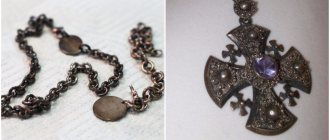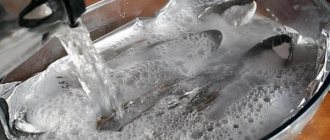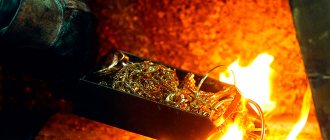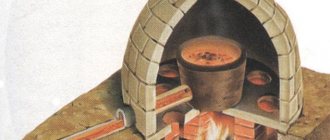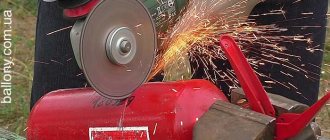The simple can you drink Sprite, Coca-Cola or Fanta from is an underappreciated source of aluminum. The fact is that they are made from high-quality aluminum with a small admixture of tin, which is indispensable in the food industry.
Source practicalsurvivalist.com
From scrap aluminum cans to new cans
Recycling scrap aluminum cans into new cans is considered a great example of a nearly waste-free production process. It is the recycling of scrap aluminum cans that has played a major role in the rapid growth of the market for aluminum cans for beer and carbonated drinks.
Producing aluminum from scrap aluminum uses 95% less energy than smelting it from fossil ores. The process of recycling aluminum scrap produces only 5% of the harmful emissions that destroy the earth's ozone layer than the production of primary aluminum [4].
More than 350 billion aluminum cans are sold worldwide. However, not all banks are scrapped. The share of scrap in the total volume of aluminum cans is:
- in Sweden - 90% aluminum cans,
- in the USA - up to 70%,
- in Australia, Canada, Japan and China - about 80%,
- in the world as a whole – a little more than 50%.
In 2022, 74.5% of used aluminum beer and beverage cans were recycled in Europe. As it was in various European countries, see the graph in Figure 1 [4]. A typical plant for converting aluminum cans into ingots for rolling aluminum sheet to make new cans is shown in Figure 2.
Figure 1 – Share of recycled aluminum cans by European countries [4]
Figure 2 – Plant for processing scrap aluminum cans into rolled ingots for the manufacture of new cans [3]
A small portion of scrap aluminum cans is melted down in conventional or rotary melting furnaces and is used mainly for the production of foundry alloys.
Simple remelting of waste aluminum cans gives on average the following composition of aluminum [2]:
- Si – 0.26%
- Fe – 0.40%
- Cu – 0.20%
- Mn – 0.86%
- Mg – 1.22%
- Ti – 0.04%
- the rest is Al.
“Aluminum” of this chemical composition fits well within the chemical composition ranges of alloys 3004 and 3104 (see table below), which are used to make the can body. Therefore, the vast majority of metal from scrap aluminum cans—about 80%—is returned to the manufacturers of new cans.
Below are general approaches to recycling aluminum can scrap when it is used again to make cans. Similar, sometimes very complex, technologies are used in many factories in the USA and Western Europe.
Is it possible to melt aluminum over a fire?
Aluminum is a very common metal in both industry and households. It is not uncommon that when a part breaks, there is a need to smelt a replacement.
Melting aluminum at home is attractive because it is possible at a relatively low temperature.
To carry out the operation yourself, you need to know the characteristics of the metal when exposed to temperature and its physicochemical properties.
Characteristics
The melting point of aluminum always depends on how pure the metal is. On average it is 660 degrees, with a boiling point of 2500 degrees.
Lightness and plasticity allow it to be perfectly processed by various technological operations.
At normal and elevated temperatures, metal actively interacts with oxygen from the air. In this case, the surface is covered with an oxide film, which serves as protection from further oxidative processes. This must be taken into account, since during melting the composition and structure of the alloy changes noticeably.
Another important characteristic is that sudden cooling can lead to internal stresses and shrinkage of the resulting metal.
Features of the technological process
By and large, remelting aluminum at home should simulate industrial casting. Raw materials prepared for melting must be cleaned of dirt, foreign impurities and possible fillers. Large workpieces must be crushed to the required size.
Casting technology involves performing several operations. During preparation, the scrap is melted in a convenient way. After achieving fluidity, it is necessary to remove the slag from the surface of the melt. The final stage is filling the prepared mold with the molten composition. Disposable forms are broken down as they cool.
At the preliminary stage, it is necessary to decide what is to be melted and what should be obtained. Even if the aluminum alloy is to be melted as an experiment, some form must be prepared. Due to this, you can evaluate the result. The ingot will show its appearance, degree of porosity and purity. Any experiment can be beneficial.
What heat source should I use?
To smelt aluminum at home you can use:
- Homemade muffle furnace. A fairly effective method that allows you to easily melt aluminum.
- An ordinary homemade oven. The natural gas temperature will be sufficient for smelting.
- Gas burner/stove or blowtorch. A completely acceptable method for small volumes of melting.
- A torch or acetylene generator, if available, can also provide the required temperature.
Using a homemade smelting furnace
The easiest way is to lay several fire bricks in the shape of a hearth. It is convenient to use a metal container as a frame. A hole should be made on the side to connect the air supply tube. A suitable metal pipe will do. You need to connect a vacuum cleaner, hair dryer or other device that supplies air to it.
Charcoal is placed in the hearth, the fire is lit and air is supplied. The container in which the aluminum will be melted is placed in the furnace. It is also necessary to line the sides with coal. The best option would be to create a lid so as not to waste heat. You can only make a passage for smoke.
Application of kitchen stove
For piece melting it is not necessary to create your own stove. You can reach the required temperature even using household gas. Given the mass of aluminum blanks for melting, the procedure itself will not take more than 0.5 hours.
You can take any suitable container, for example a tin can. It houses crushed and cleaned aluminum. However, it will not be possible to melt aluminum simply by putting a jar on fire; the required temperature is not reached. To preserve heat, the following scheme has been invented.
A jar with a crowbar is placed inside another, larger one, on supports so that a gap of up to 10 mm is maintained. In a larger jar, 30-40 mm holes are prepared in order for the flame to fit. In this case, there is no need to remove the burner divider.
The resulting structure is installed above the burner. The burning flame will pass into the inside of the larger jar and heat the container with the metal. In this case, a large tin will act as a kind of shell that retains heat. a suitable lid is placed, but a gap is left so that combustion products escape. When heating, the intensity of the flame must be adjusted.
Using the crucible and auxiliary equipment
The previous method is good, but the jar cannot withstand more than one use and may burn out. In this case, there is a risk of metal spilling onto the burner.
To work in the furnace several times, it is recommended to prepare a special container - a crucible. It is made of steel. It is quite possible to use a piece of pipe whose bottom is welded.
A good device can be obtained if you use a cut-off fire extinguisher or a small oxygen cylinder with an oval profile.
In this case, it is worthwhile to provide for the presence of a side chute for draining molten aluminum.
This may require auxiliary equipment, such as pliers. The ideal case would be to use side clamps and lower fixed stops - analogues of industrial installations. You will also need a long spoon to skim off the slag.
How to make a casting mold
The main tasks when melting aluminum include preparing the mold in which the liquid metal will be placed. The melt can be poured in various ways, but the main ones are open and closed casting forms.
Open method
The simplest option is to pour molten aluminum into an existing container, for example, a tin can. After the metal hardens, the ingot is removed. To facilitate removal from a form that has not yet completely cooled down, it is necessary to tap slowly.
If you don’t need a specific clear shape, you can simply pour the liquid alloy onto a non-flammable surface.
Closed method
If it is intended to produce more complex shapes or ingots, then first of all a mold must be produced that meets all the characteristics of the part. To ensure greater accuracy, it is made of several components.
Materials used for molds If an open method is assumed, then the simplest ingredient that can always be found is mainly used - silica. The soil must be laid using layer-by-layer compaction. A mock-up mold is placed between the layers, leaving an imprint after compaction. This model is subsequently removed and molten metal is poured in its place.
In some cases, river sand is used to create forms, to which liquid glass is added. Less commonly, cement mixture and brake fluid.
When it is necessary to create a model with a complex configuration, plaster is often used. However, it can mainly be used once. When aluminum is cast into a plaster mold, a paraffin or foam blank can serve as a model.
When using paraffin, the workpiece is immersed in plaster. In this case, it is necessary to leave a small hole into which the wax is poured after the mold hardens and reheats.
If foam plastic is supposed to be used, then it is poured inside a plaster mold, in which it remains until it hardens. Subsequently, liquid metal is poured directly onto it.
Due to the temperature, it melts and evaporates, and the vacated cavity is occupied by aluminum.
In this case, it is necessary to take into account that the work should be carried out in a well-ventilated area or in the open air, since evaporated foam vapors are harmful to health.
Common mistakes and how to avoid them
- The plaster mold is very convenient for casting the required configuration, but plaster is sensitive to moisture. If the mold is dried in the usual way, it may remain in the composition, which reduces the quality of the casting, as it contributes to the formation of bubbles and potholes. For this reason, drying must be carried out over several days.
- The temperature of the molten aluminum must be sufficient so that it has time to fill the entire space of the mold before it begins to solidify. Therefore, after melting, you should not hesitate to pour it.
- It is not advisable to immerse molded metal in water to speed up the solidification process. This leads to disruption of the aluminum structure and cracks.
Security measures
The operating technology involves the use of an open flame, which leads to certain limitations. Before starting work, it is worth preparing fire extinguishing equipment, checking the functionality and serviceability of gas equipment and ventilation.
Handling molten aluminum is dangerous. Therefore, work should be carried out taking into account safety precautions. It is imperative to use special clothing, eye and respiratory protection.
The following videos will show the necessary instructions and help you understand step-by-step algorithms for actions and operations with molten metal.
How to cast an aluminum part at home
For many, the term “foundry” is closely associated with back-breaking labor and specialized professional skills.
In fact, casting a part from the required metal is possible for the most ordinary person without professional training at home. The process has its own subtleties, but it can be done at home with your own hands.
Outwardly it resembles the production of lead weights for fishing. Features of the aluminum casting process are related to the technical characteristics of the material.
How to cast aluminum
Characteristics of aluminum.
Aluminum is one of the most common metals.
It is silver-white in color and lends itself quite well to casting and machining. Due to its characteristics, aluminum is equipped with high thermal and electrical conductivity, and also has corrosion resistance.
Technical aluminum has a melting point of 658 degrees, high-purity aluminum has a melting point of 660, and the boiling point of aluminum is 2500 degrees.
For aluminum casting, home heating devices are unlikely to be useful and will provide the required temperature. It is necessary to melt aluminum by heating it to a temperature of over 660 degrees.
Aluminum Can Alloys
It is useful to know that aluminum cans are made from several different aluminum alloys and only from them (table):
- In the body of the can, aluminum alloy 3004 or aluminum alloy 3104 is used, which are very similar in chemical composition: manganese and magnesium on average 1%, copper - up to 0.25% and iron - up to 0.7-0.8%.
- The lid of the jar is made of alloy 5182. This alloy already contains 4-5% magnesium, and 0.20-0.50% manganese.
- The key for opening the can makes the smallest contribution to the total mass of the can. It is made from alloy 5042 with a magnesium content of 3-4% and manganese - 0.20-0.50%.
Beer can opening mechanism
The task of the ear and petal (it is also called “tongue”) is to achieve a pop of escaping carbon dioxide with a force on the ear of about 3 kilograms and to completely push the petal (tongue) inside the jar with a force of up to 7 kilograms, and the petal should remain hanging inside the jar.
This is achieved by making special notches along the perimeter of the petal of such a depth that only 0.085 mm of metal remains near the rivet and 0.110 mm on the opposite side (Figure 6). At the same time, the material on the notches is strong enough not to be destroyed during the technological process or during unloading in the store.
Inside the petal you can see another, inner row of notches. They are not as deep and are said to serve to direct the flow of metal on the main notches and prevent the main notches from breaking during their formation.
Figure 6 - Ingenious notches ensure reliable opening of the can in two stages: first releasing gas, then pushing the petal inside the can [1]
More:
The Ingenious Design of the Aluminum Beverage Can
Shredding aluminum can scrap
Typically, aluminum cans are sent for remelting in the form of briquettes weighing up to 400 kg and with a density of no more than 500 kg/m3. These briquettes are convenient for transportation, but are not suitable for direct loading into an oven for melting into materials that will be used to make new cans. Therefore, these briquettes are crushed and sorted to ensure that they do not contain liquids or explosive materials. This is very important to ensure the safety of foundry workers and the safety of foundry equipment. For this purpose, a special grinding machine is used - a shredder.
Costs and return on business
According to the owners of the facilities, the profitability of producing aluminum containers is higher than the profitability of the business producing packaging materials and rolled aluminum. The average untested return on the market is 22%. Market participants calculate profitability based on many years of experience, which assumes the stability of production relations at each stage.
We recommend reading:
- production of biofireplaces as a business –
- how to organize the production of welding electrodes –
- how to organize a polyethylene production plant -
- foam rubber production –
- production of fiberglass reinforcement –
- production of polystyrene foam –
An approximate calculation of production costs and expenses when starting a business looks like this:
- acquisition and installation of a production line with a capacity of 10 thousand cans per shift: $60,000.
- Repairs, additional equipment of the premises, purchase of office equipment: $15,000.
- Creating a stock of raw materials: $15,000.
- State registration, registration of permits, production certification: $6,000.
- Salary: $3,000.
- Utilities: $1,500.
- Working capital, safety stock: $15,000.
Consumers are willing to buy an aluminum can at a weighted average price of $0.05 or 5 cents, in which $0.025 is the cost of raw materials. Accordingly, two work shifts will bring in gross production income of $500 or $12,000 per month for 24 working days. Thus, the payback period for the business will be 9-10 months without taking into account the tax base. The amount of tax deductions will proportionally increase this time. At the same time, the profitability before taxes is 17.5%.
The aluminum can business is dangerous for amateurs. The business owner has experience in developing production of similar volumes, business reputation, and connections. Professionalism of management, professional knowledge, understanding of the market are integral criteria when deciding to launch production.
The aluminum market is characterized by a high share of monopolies with a certain part of state interests. Cooperation with monopolistic producers is characterized by a lack of flexibility and loyalty to partners. Therefore, the responsibility and risks when deciding to enter a business are high.
"Declaring" scrap aluminum cans
Two approaches to continuous thermal varnish removal are used. One is based on holding shredded aluminum scrap for relatively long periods of time at a specific temperature, and the other is based on short heating cycles with a gradual increase in temperature to just below the melting point of the aluminum scrap.
In the first case, a conveyor oven is used, in which crushed aluminum cans pass through a chamber at a temperature of about 520 ° C. This chamber contains varnish combustion products, which are diluted with air to create an atmosphere favorable for varnish removal.
The second approach uses a rotary furnace with a complex system for recirculating combustion products. The temperature of the last stage is about 615 ° C, which is very close to the melting point in aluminum-magnesium alloys from which lids (alloy 5182) and openers (alloy 5054) of beer cans are usually made.
Both systems can have problems that result in incomplete varnish removal. If the temperature is too low or the processing time is too short, a black resinous coating remains on the surface of the aluminum. This leads to the ignition of scrap during its melting and excessive loss of metal due to waste. If the temperature is too high or the processing time is too long, this leads to significant oxidation of the scrap and also leads to increased metal losses.
Marketing and sales channels
As noted, the sale of finished products before the start of production is focused on at least one reliable buyer. A long-term supply contract minimizes possible risks in terms of quality and volumes of supplied products. If capacity exceeds current supply volumes, production is stable, and you can move on to searching for new partners.
The marketing component of the business is simple: the company’s representative website with a detailed description of the technological characteristics of the products and product range is a sufficient means for promotion. Periodic ways of promotion are industry and thematic exhibitions. The list includes metallurgical exhibitions and expositions where manufacturers of food products, household chemicals, and drinks are represented. Traditional types of advertising are inappropriate and will only increase costs.
Otherwise, the company's marketing department is guided by a detailed database of can consumers, compiled in-house. Cold contacts are made with consumers; at the slightest demand for products, acquaintances and connections are made. Over time, such connections lead to the supply of small pilot batches and the conclusion of contracts for large volumes.
Separation of aluminum alloys
The hot, “delaminated” aluminum scrap then enters a thermomechanical separator chamber. This chamber maintains a predetermined temperature and a non-oxidizing atmosphere. In it, the lids of cans made of alloy 5182, as well as keys made of alloy 5054, are subjected to light mechanical stress, as a result of which they are broken into small fragments along the grain boundaries. The whole process is based on the fact that under the influence of a narrow temperature range, only the grain boundaries are softened. These small fragments of 5181 and 5054 alloys are continuously screened out and sent to the lid melting furnace, and the remaining aluminum scrap is sent to the can body melting furnace.
Finding a larger room
First of all, you will need to find a good premises. It should be understood that it must be quite spacious, since equipment will subsequently be installed in it. In addition, the workshop must be heated and well lit.
In addition, a high-quality ventilation system must be established. In addition to finding premises, you will also need to register your business again. Only instead of an individual entrepreneur you need to choose an LLC, since you will be dealing with legal entities. They are the ones who will become your clients.
Melting aluminum scrap
Special furnaces are usually used to melt aluminum cans. When melting, a significant amount of slag is formed - a mixture of metal, oxides and other contaminants. This slag contains a lot of gases, so it floats well on top of the melt. It is removed and sent for metal recovery. Typically, the weight of the slag is about 15% of the initial scrap load. From this special furnace, the melt is transferred to a continuous melting furnace, into which coarse aluminum scrap and virgin unalloyed aluminum are additionally charged to obtain the desired volume and approximate chemical composition of the given alloy.
Interesting Facts
- The first cans were similar to the usual tin containers and were opened with a can opener. The sharp edges injured the consumer.
- In 1963, the cans were equipped with a tear-off tab, similar to the one found on modern juice cartons. The author of the invention is Ermal Cleon Frase, an inventor from Ohio.
- The non-removable eyelet, with which the container is opened, was invented 17 years after the release of the first beer can - in 1975.
- By 1980, Dayton Reliable Tool, Frase's company, had revenues of more than half a billion dollars.
- The jar collection of John Ahrens of New Jersey consists of 15,000 pieces.
- In Darwin, Australia, a regatta is held every year on floats made from empty cans.
- Waste activist and architect Mike Reynolds builds houses out of aluminum cans. The building material is cans held together with cement mortar.
- The Japanese brewing company Kirin Brewery produces the lightest aluminum cans. The weight of a 350 ml container is 14 grams.
- Recycling one aluminum container saves enough electricity to power a TV for three hours.
- In plinking, recreational shooting at non-standard targets, aluminum containers are the most popular target.
- The most expensive Rosalie Pilsner beer can was sold in 1981 for $6,000.
Production of aluminum cans
Aluminum strips for can bodies and lids are supplied to can manufacturers. As a result of the aluminum can production process, about 20% of the aluminum strip (or 13% of the original melt) is returned to the ingot manufacturer in the form of production waste - the remains of sheets with holes in place of the cut blanks for can bodies and lids. In general, about 55% of the amount of the initial melt in the mixer goes into internal, production scrap. If all cans were returned as aluminum scrap, then to close the cycle of recycling old aluminum cans into new ones, only aluminum losses from waste would need to be replenished—just a few percent.
Sources: 1. Aluminum and Aluminum Alloys, ASM International, 1993 2. https://www.icaa-conference.net/ICAA12/pdf/IL-04.pdf 3. TALAT 1102 4. https://www.metalpackagingeurope. org
Precautionary measures
To work with molten aluminum, you must use personal protective equipment. All exposed areas of the body, hands, and face must be protected.
REFERENCE! It is best to use welding gloves; they can withstand temperatures of more than 600 0C. This means of protection is the most basic, since the possibility of molten metal getting on your hands is very high.
It is also better to use goggles and a mask to avoid hot elements coming into contact with your face and eyes. To protect the entire body, you can find a metallurgist suit that has high fire resistance. When cleaning aluminum welding flux, a chemical respirator is used.
